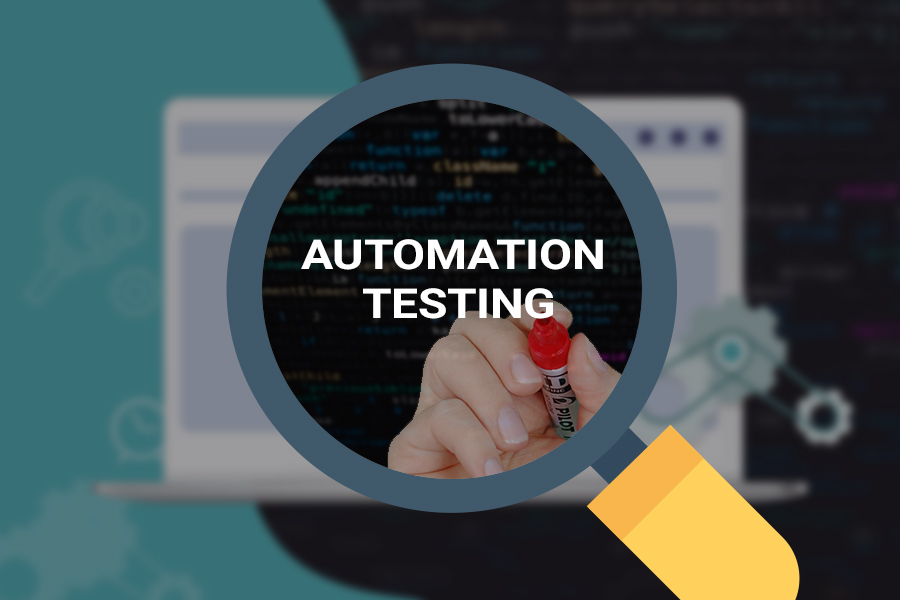Exploring the Future of Automation Testing in Software Growth
Exploring the Future of Automation Testing in Software Growth
Blog Article
Guaranteeing Success in Automation Testing: Secret Metrics, Obstacles, and Solutions Every QA Team Must Know
In the realm of software program quality control, the landscape of automation testing is ever-evolving, requiring a meticulous strategy to guarantee seamless operations. Secret metrics act as the compass assisting QA groups via the vast surface of examination automation, shedding light on development and locations for improvement. Nonetheless, difficulties impend large, frequently casting shadows on the course to success. By understanding these difficulties and executing effective options, QA teams can navigate via complexities with finesse. The journey to mastering automation testing is led with nuances that call for a keen eye for monitoring, analysis, and continual renovation. automation testing. As the industry pushes forward, the quest for optimum performance in automation screening continues to be a continuous search, advising QA teams to equip themselves with the understanding and techniques important for accomplishment.
Importance of Secret Metrics
Recognizing the importance of essential metrics is necessary for examining the performance and effectiveness of automation testing processes. Key metrics work as measurable measures that give useful insights into numerous facets of the testing process, such as examination protection, examination execution time, flaw density, and examination situation efficiency. By evaluating these metrics, QA teams can identify bottlenecks, inadequacies, and locations for improvement within their automation screening framework.
One important element of essential metrics is their capability to track development and keep an eye on the total health and wellness of the screening procedure (automation testing). They make it possible for stakeholders to make educated choices based on data-driven understandings, which can result in extra reliable testing techniques and much better resource appropriation. In addition, essential metrics can assist groups set reasonable objectives, gauge the success of automation initiatives, and show the ROI of automation screening efforts

Typical Difficulties Faced
Difficulties frequently encountered in automation testing procedures can considerably impact the general performance and efficiency of QA groups. Among the significant obstacles is the selection of the right test situations for automation. Not all examination cases appropriate for automation, and choosing the wrong ones can result in squandered time and sources. Additionally, keeping test manuscripts can be a difficult task, specifically as the application undergoes constant modifications. Test script upkeep needs constant updates and modifications to guarantee they reflect the current capability accurately. An additional typical difficulty is the preliminary investment needed for establishing automation frameworks and tools. This can be a barrier for some organizations, particularly smaller sized ones with minimal budget plans. Automation screening might not cover all aspects of testing, such as functionality and customer experience testing, which still call for hands-on intervention. Overcoming these difficulties requires proper preparation, critical examination situation selection, robust maintenance processes, sufficient sources, and a clear understanding of the restrictions of automation testing.
Reliable Solutions for Obstacles
To deal with the challenges encountered in automation screening, applying efficient services is essential for boosting the performance and performance of QA groups. One key solution is to buy durable training programs for QA teams to guarantee find here they have the required abilities to effectively use automation devices. Training can connect expertise gaps, boost understanding of automation frameworks, and improve scripting abilities, eventually bring about more efficient test production and execution.
Another vital remedy is to develop clear interaction networks within the QA team and with other stakeholders, such as programmers and task managers. Effective communication aids in lining up assumptions, sharing progress updates, and immediately attending to issues or roadblocks that might emerge throughout the automation testing procedure.

Monitoring and Analysis Methods
Carrying out efficient monitoring and analysis methods is crucial for making sure the success and performance of automation screening processes. Furthermore, analyzing examination outcomes and metrics offers beneficial insights into the top quality of the software application being checked and the effectiveness of the screening strategy.
One key strategy in tracking and analysis is making use of control panels that settle pertinent metrics and KPIs in an aesthetically easily accessible style. These dashboards supply a comprehensive review of test implementation condition, test protection, defect patterns, and other critical info. On a regular basis assessing and analyzing these dashboards can aid QA teams make educated decisions, prioritize jobs, and enhance testing efforts.
Moreover, carrying out automated notifies and notices based on predefined thresholds can improve proactive tracking and timely treatment. By establishing signals for efficiency variances or content examination failings, teams can resolve concerns without delay and prevent them from rising. Overall, monitoring and analysis techniques play an essential duty in making certain the performance and success of automation screening efforts.
Continual Enhancement Methods
Enhancing the effectiveness of automation screening procedures requires the consistent improvement of methods and approaches. One vital approach to enhancing automation testing procedures is to carry out regular reviews and retrospectives.

Conclusion
Finally, it is vital for QA groups to understand the crucial metrics, obstacles, and options in automation screening to guarantee success. By carefully monitoring and evaluating data, executing reliable services to common difficulties, and continuously boosting techniques, QA groups can maximize their screening procedures and supply top notch software products. Complying with these practices will eventually result in more reliable and effective automation testing practices.
By examining these metrics, QA teams can recognize traffic jams, inefficiencies, and areas for enhancement within their automation screening framework.
In addition, this hyperlink essential metrics can assist teams established sensible goals, determine the success of automation campaigns, and show the ROI of automation testing initiatives.
Challenges generally run into in automation testing procedures can considerably influence the general efficiency and performance of QA teams. Automation screening might not cover all facets of testing, such as functionality and customer experience testing, which still require hands-on treatment.In conclusion, it is essential for QA teams to understand the crucial metrics, challenges, and services in automation screening to make sure success.
Report this page